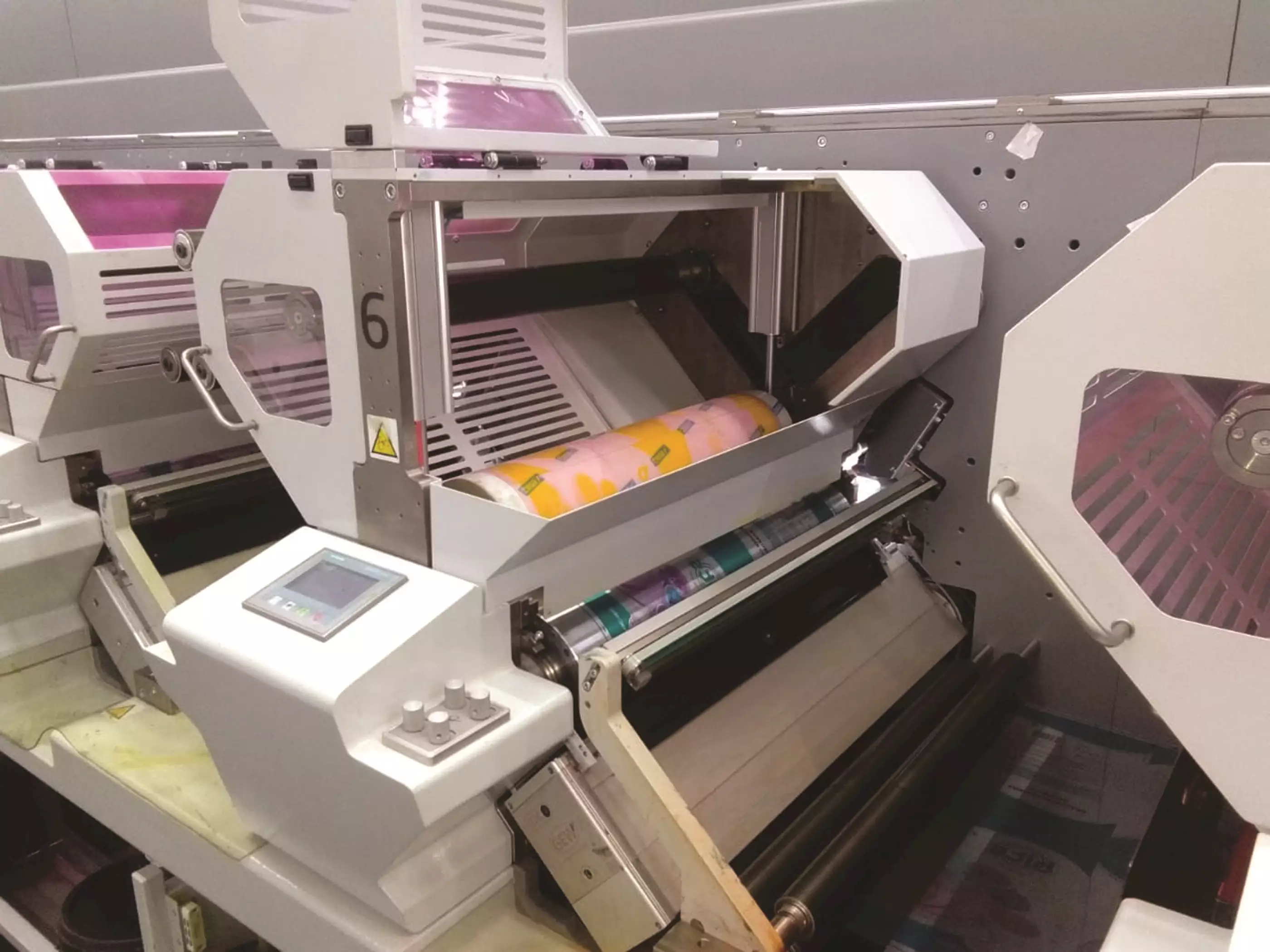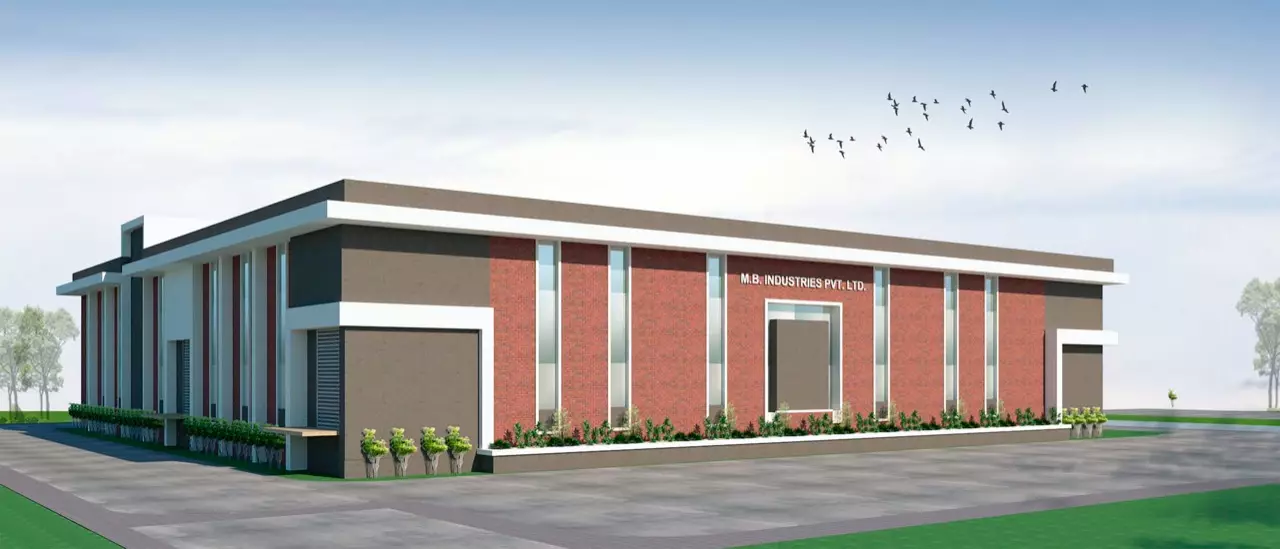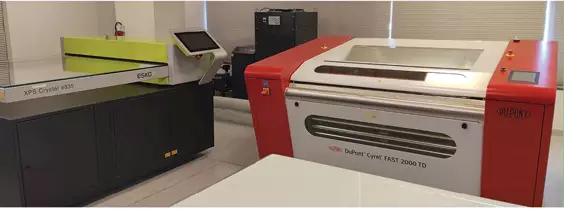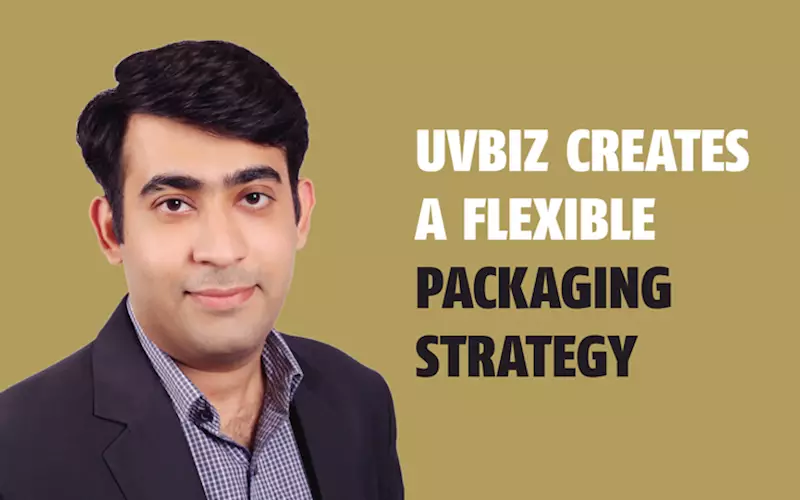Uvbiz creates a flexible packaging strategy - The Noel D'Cunha Sunday Column
Rohit Badlani, director of MB Industries in Indore set up a flexible printing business - Uvbiz - invested in a press, and brought flexo platemaking capabilities in-house incorporating the extended colour gamut (ECG) technology.
Badlani discusses ECG’s production workflow efficiency and how he has reset the ops for his clients. Read on...
22 Nov 2020 | By Noel D'Cunha
In 2018, director of Indore-based MB Industries, Rohit Badlani was looking for something that would plug the gap for smaller flexible packaging requirements, as well as help the company to create a “niche” business, which would serve both the big as well as new, smaller brands.
MB Industries has been a contract manufacturer for popular FMCG brands for around 25 years, producing export-based varieties of 3,000 tonnes of biscuit, and 5,000 tonnes of atta per month at its two plants in the food city of India. Besides, Indore was becoming a hub, one for confectionery and the other namkeen products, which were growing in terms of varieties but in relatively small quantities.
Badlani says, “When the brands buyers enquired for smaller quantities, they’d start the process of finding packaging suppliers, in order to get hold of the orders. A leading biscuit brand, for example, had their own printing sources, but the least they could supply was 500kgs of packaging material. Later we realised that this was the problem with almost every flexible packaging convertor.”
Besides the two giant clients, there were snacks players in Indore and few others produced 300+ varieties of namkeens. “Waiting for packaging material delayed supplies. You cannot have 500kg of packaging material for all those 300+ varieties. As a result, there was a lot of non-moving inventory of packaging material in the plants. That was a big challenge,” informs Badlani.”

DuPont Cyrel flexo plates have been the most important joining block between the substrate, the ink and the press
Meeting the challenge head on
It was PlastIndia time in 2018. Badlani visited the show, spoke to flexible packaging companies to find out what is the general turnaround time for around 100kgs of printed packaging material.
It was also the time when a lot of start-ups were coming up, which were getting into small stuff – doing packaging for frozen food, and the like, says Badlani. “We went on to try a confectionery wrapper. We asked gravure printers about the lead time that we should be expecting and to our surprise, from design finalisation to getting the cylinders made to getting it printed could go up to 50 days.”
In September 2018, MB Industries decided to establish Uvbiz packaging division to try and meet the needs of the new smaller brands and SKUs. The existing industry gap/challenge was clear – long lead times and high MoQs (minimum order quantity).
Badlani had heard of Revo technology, and how one could produce short runs at a relatively low price, and in quick time. “We did our own research in terms of the ecosystem that was being promoted. We got hooked on it,” he says.
Bobst established the Revo technology in partnership with DuPont, Apex International, AVT, Esko, Flint Group, Saica Flex, Stora Enso, UPM Raflatac and X-Rite Pantone. Revo’s purpose was to optimise the digitalisation of the flexo production process.
Badlani’s initial thought-process was to get only the printing and converting set up. Uvbiz ordered the Bobst M6, Nordmeccanica solventless laminator and pouching equipment.
When Uvbiz zeroed in on the Bobst Revo technology, Badlani started spreading the word among the brand owners around his company. “These retail brands were very keen as fast turnaround and short quantities for packaging was their burning need for their in-house brands,” says a delighted Badlani. There cannot be an ideal scenario than a customer chasing you for a solution.”
Badlani never considered going any wider than 670mm. He says, “Our focus was always short runs. Going wider would have made us another CI flexo or gravure converter doing only long runs. We never wanted to be in that space.”
Why not long runs?
From a packaging perspective, top brands generally have one SKU requiring long runs.However there are at least 10 smaller brand extensions/SKUs attached to this big SKU. “This is how the industry operates,” says Badlani. He cites an example of a visit he made to one of the largest flexible packaging buyers in India. “I told them that I am looking for 200kgs to 300kgs of orders for small pouches for their export products. I was told this was only 2% of the total flexible packaging requirement that the brand procured, which ran into thousands of tonnes.”
This 2% to 5% is where Uvbiz’s niche is going to be. “I would perhaps need at least three to four machines to produce that volume of packaging for big brands,” quips Badlani.
Smaller SKUs or brand extensions always face challenges, with packaging it is the volume and lead time as no converter is keen on such jobs. “At Uvbiz, these are the gaps that we are filling. With the value that we can add on packaging, we are happy to provide these smaller SKUs an equal opportunity to be winners in the market”, says Badlani.

MB Industries’ plant in Indore contract manufactures food products for popular FMCG brands
The pre-press connect
When one talks to flexo players in India and overseas, the first thing they say is: flexo is an art. It needs a certain kind of understanding of the pre-press process or else you can fail miserably.
While Badlani was keen on bringing in the Revo technology in-house, he planned on outsourcing the printing plates. That thought quickly evaporated as he began considering extended colour gamut (ECG) and fixed colour palette (FCP) technologies for high efficiency and high quality printing. “We were looking at nothing less than 20 jobs of 20 different varieties with three SKUs each,” explains Badlani. That meant 60 jobs could be coming in at one go.
“This changed my mind. Doing 20 jobs or 20 sets of flexo plates everyday could be possible only if we had platemaking in-house. We would be more in control of what we would be definitely producing,” says Badlani.
While Bobst had mooted the Revo technology to Badlani, two Revo partners played an important role in Uvbiz’s journey. One was support from Esko, which brought in their software, and second was DuPont, whose Cyrel flexo plates have been the most important joining block between the substrate, the ink and the press. “DuPont has almost seamlessly integrated into the system. The company’s technical specialists were always available, connecting with all the partners, to deliver flawless and consistent plate results,” Badlani says, reminiscing the wonderful support he has received from DuPont.
Badlani had considered a solvent based platemaking system which was what the industry largely used. DuPont introduced him to all the available platemaking technologies and based on his production requirements recommended the Cyrel Fast thermal platemaking. Badlani visited the ADIKC demo center in Pune to have a first- hand experience of the thermal platemaking technology located alongside a flexo press. Badlani was convinced with the quality, speed and ease of the thermal platemaking technology. “With the Cyrel fast thermal system, the amount of press downtime I have reduced is immense. It is the ideal complimentary technology for any converter considering minimal job turnaround times. Besides, I don’t have explosives in my factory with solvent and solvent recovery systems,” chuckles Badlani.
The ECG challenge
Badlani did experience different levels of engagement from each of the original Revo partners. Having the key players Bobst, Esko and DuPont fully committed to the success of the project helped get the others also on board. Some partners, he chose to replace based on the local support available.
Bringing platemaking in-house at Uvbiz began with the idea of reducing the lead time for the customers.
Rohit cites a case of a soft drink brand which came to his plant with a PDF file of the designat 9am. By 5pm on the same day, Uvbiz was printing the jobs. “That is the kind of speed the customer needs in today’s time, and we are able to deliver it because of technologies like the DuPont Cyrel Fast platemaking that we have invested in.”
So Uvbiz experimented with ECG, but can it experiment further? Badlani explains. “When you say you can’t experiment, let’s look at it this way. There is an end result that has to be produced. The question to be asked is: how many attempts do I undertake to match that end result. Typically for any converter, there are a lot of variables in the entire system within pre-press and press operations. You can always get a different result. And that is the reason we have something as a light, standard, dark (LSD) for every packaging. You could always get a different result. This is the tolerance between the upper end and lower end of a print.”
So in Uvbiz’s case everything is brought down systematically to a number. “This variation from the standard is hardly there. You give us an end result, and we will match it for you. We don’t need to experiment and waste time and resources.”

Bobst M6 flexo press installed at Uvbiz’s plant in Indore
Getting the right people
The initial challenge was: getting pre-press professionals who carried no baggage.
Badlani says he always had this in mind: like me, I wanted everybody to be neutral to the possibilities of the printing world. “We looked for people from different fields who could add a fresh perspective to the mundane. We wanted to avoid getting professionals from the field, who would have prejudiced opinions, which would be an impediment to the project.”
He selected a bunch of engineers from different streams – mechanical to computer science putting them to work in pre-press and press. “We have two resources for pre-press and platemaking. We hired one experienced person, a flexo printer with 40-45 years’ experience. Interestingly, he was the only one with reservations like – yeah toh aise hi hota hai, hone chahiye. However, when the new team started accomplishing its tasks and getting super results, he saw good reasons in my decision.”
Six months into its operation, the Government of India announced a national lockdown, which would have sent any start-up into a tizzy. But it wasn’t the case with Uvbiz.
The company has been busy catering to its existing customers and even new ones who have not been getting their packaging requirements in time. “For some the whole branding changed, some wanted their branding linked to Corona or Covid. There were many changes made to the packaging following the Covid-19 pandemic, challenging for most converters,” says Badlani adding, “With our ability to handle a job through design, platemaking, printing and converting in-house, we were well placed to meet demand. In fact, we have been growing all throughout the lockdown.”
Investing in the right technology infrastructure has helped Uvbiz create a niche in the crowded flexible packaging market, even giving them a competitive edge. “The technologies in our plant are very simple. It is not a complicated process to be in, if you get into it and learn the basics of it, it is a very simple process to follow where you don’t have to put your mind at work, it is the science which works its way out.”
Badlani concludes on an optimistic but a sure note, saying, “Within a year, Uvbiz has touched 22 job changeovers in a day. In another month or so, we are targeting 50 jobs in a day.”
Uvbiz Factfile
- Established in: September 2019
- Location: Indore
- Speciality: Flexible packaging
- Equipment at the plant: Bobst M6, Nordmeccanica solventless laminator and pouching equipment, Esko Cyrel Digital Imager (CDI), DuPont Cyrel Fast 2000TD
- Software and consumables: Esko software, DuPont Cyrel Easy plates
- Turnover: Rs 15 cr
- Employees: 30
DuPont’s Take

Design to print within hours, just-in-time plates/cylinders, extended colour gamut, fixed colour palette printing, quick job changeovers – these have been much discussed, aspired topics debated in the package printing industry. Uvbiz has achieved all of the above in running a very efficient, lean and top-quality operation. They have set a standard for the industry. The next generation of DuPont Cyrel Fast 2000TD and Cyrel Easy plates family is enabling what’s next for package printing.












 See All
See All